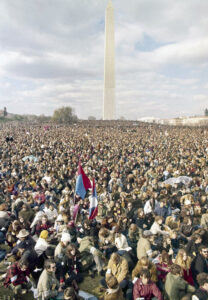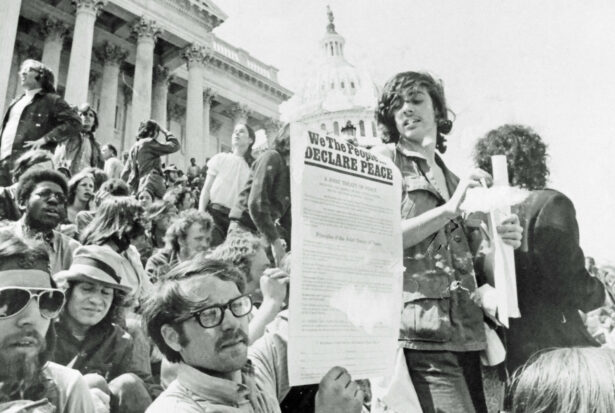This piece is a call to action for individuals to join in the civil disobedience measures that will be taking place beginning on May 1, 1971 and continuing until a peace treaty is implemented by the Nixon Administration. Should Nixon fail to call an immediate end to the war within two days, the group is set to close down the federal government through acts of civil disobedience. The importance of these actions being non-violent is stressed, while various methods of blockades, strikes, and more are mentioned. The author also articulates how demonstrations should be carried out in more cities than just Washington D.C. and that all communities should get involved as everyone is affected by the war.
anti-war
May Day Tactical Manual – Student and Youth for a People’s Peace (1971)
1946-1989, Blockade/Barricade, Date, Disruptive Spaces, Occupation, Tactics of Disruption, Urban SpacesThis is a manual published in advance of the 1971 May Day protests in Washington D.C. It describes how to carry out civil disobedience actions in opposition to the Vietnam War. Information on non-violent civil disobedience, the schedule for when actions will be carried out, the organization form that will be taken, various tactics that will be utilized, as well as images and maps of the city are included in the document.

People’s Blockade of S.F. Bay
1946-1989, Date, Disruptive Spaces, Infrastructure/Data, Occupation, Tactics of DisruptionThis piece was an anonymous call to action to impose a people’s blockade on the Oakland Army Terminal and the naval facilities at the port of Oakland-San Francisco. This was in response to President Nixon’s blockading of Haiphong and the destructive air and naval bombardments he had recently ordered on Vietnam. The Oakland Army Terminal was a major loading point for U.S. troops and munitions to be sent to Vietnam, which is why these anti-war activists sought to disrupt its operation in the hopes of forcing Nixon to bring the Vietnam War to an end.


